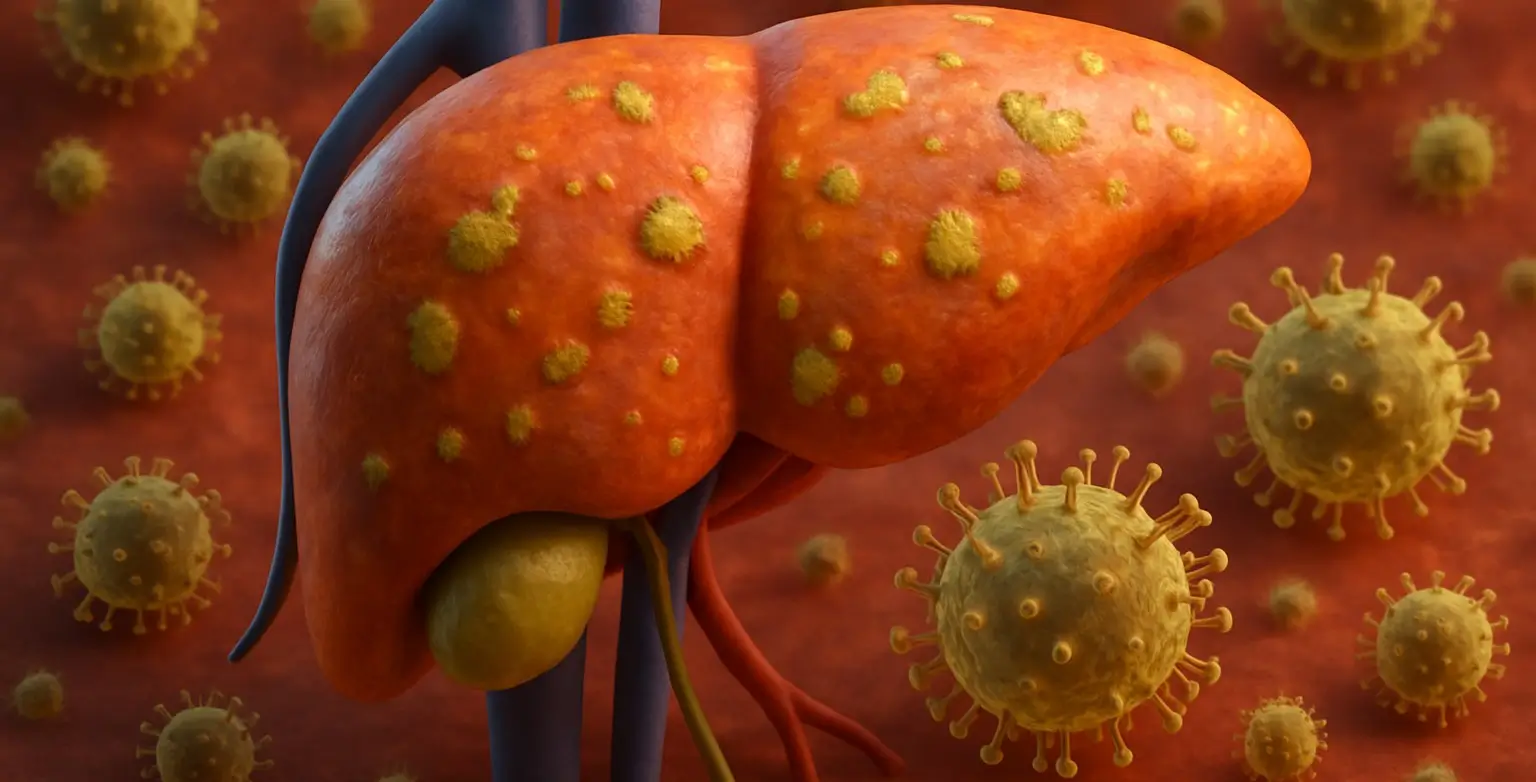- Hepatitis refers to inflammation of the liver and can be caused by viruses, alcohol, or autoimmune diseases.
Symptoms
- Common symptoms of hepatitis include:
- Fatigue
- Loss of Appetite
- Nausea and Vomiting
- Abdominal Pain
- Jaundice (yellowing of the skin and eyes)
- Dark Urine
- Pale Stools
- Joint Pain
This is a sample ad placement!
Types of Hepatitis

- There are six main types of viral, labeled A, B, C, D, E, and F:
- A (HAV) – Typically transmitted through contaminated food or water.
- B (HBV) – Transmitted through contact with infected blood, semen, or other body fluids.
- C (HCV) – Transmitted through contact with infected blood.
- D (HDV) – A coinfection that occurs only in individuals already infected with HBV.
- E (HEV) – Transmitted through contaminated food or water, similar to HAV.
- F (HFV) – A rare and poorly characterized virus, with its mode of transmission and clinical significance still under investigation.
This is a sample ad placement!
Etiology
- Viral is caused by infections with hepatitis viruses:
- HAV and HEV – Often result from ingestion of contaminated food or water.
- HBV, HCV, and HDV – Spread through contact with infected blood or body fluids, such as through sexual contact, sharing needles, or from mother to child during childbirth.
Pathogenesis of Hepatitis (A, B, C, D, E, F)
- Hepatitis is the inflammation of the liver caused by various viruses.
-
Hepatitis A (HAV):
- Transmission: Fecal-oral route.
- Pathogenesis: Ingestion of contaminated food or water leads to viral replication in the liver. The immune response causes liver inflammation and damage.
-
Hepatitis B (HBV):
- Transmission: Blood, semen, and other body fluids.
- Pathogenesis: HBV infects hepatocytes and integrates into the host genome. Chronic infection results in immune-mediated liver damage and fibrosis.
-
Hepatitis C (HCV):
- Transmission: Blood (e.g., needle sharing).
- Pathogenesis: HCV RNA replicates in hepatocytes, leading to chronic inflammation, fibrosis, and potential progression to cirrhosis and hepatocellular carcinoma.
-
Hepatitis D (HDV):
- Transmission: Blood (requires HBV co-infection).
- Pathogenesis: HDV requires HBV for replication. Co-infection exacerbates liver inflammation and accelerates disease progression.
-
Hepatitis E (HEV):
- Transmission: Fecal-oral route.
- Pathogenesis: Similar to HAV, HEV causes acute liver inflammation. Chronic infection is rare but can occur in immunocompromised individuals.
-
Hepatitis F (HFV):
- Pathogenesis and transmission of HFV are not well understood due to its rarity and limited research.
-
This is a sample ad placement!
Treatment
- Treatment depends on the specific type:
- HAV and HEV: No specific antiviral treatment; supportive care with rest and hydration.
- HBV: Antiviral medications (e.g., entecavir, tenofovir) to suppress the virus; liver transplant in severe cases.
- HCV: Direct-acting antivirals (e.g., sofosbuvir, ledipasvir) can cure the infection.
- HDV: Management focuses on controlling HBV infection; interferon-alpha may be used.
Prevention
- Preventive measures include:
- Vaccination: Available for HAV and HBV.
- Safe Practices: Avoid sharing needles, practice safe sex, and ensure medical equipment is sterilized.
- Hygiene: Proper handwashing and consuming safe food and water to prevent HAV and HEV.
Thank you for reading from Firsthope's notes, don't forget to check YouTube videos!
This is a sample ad placement!

